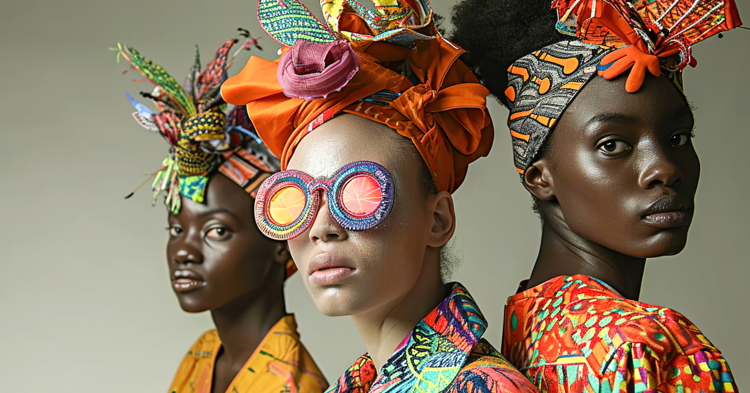Can fast fashion be sustainable?

James Gatica discusses the challenges faced with fast fashion and sustainability. He states that it is important that fast fashion changes how fashion is produced with textile printing at the core of this needed change.
Textile printing plays a key role in improving the impact of practices and processes in creating clothing around the world.
The rise of fast fashion has transformed the clothing industry, offering affordable and fashionable clothing with fast turnaround times. However, the impact of this has raised growing concerns regarding its environmental and social costs. As industries around the world assess their contributions to sustainability, the textile and garment printing sector plays a crucial role in addressing the environmental challenges of fast fashion.
While fast fashion has been made it very accessible, its negative side effects are undeniable. The overproduction of cheap clothing has created a global environmental crisis, with textile waste piling up in landfills, water sources contaminated by toxic dyes, and large amounts of energy consumed in production.
The fashion industry is now facing a reckoning, and many are looking to the textile printing industry for leadership in driving sustainability initiatives. With its critical position in the fashion supply chain, textile printing has the potential to revolutionise production practices and play a central role in promoting sustainability in fashion.
The impact
Fast fashion encourages overconsumption by continually producing cheap clothing. This has led to an increase in textile waste, with garments often ending up in landfills after just a few uses. The industry is also known for its high consumption of water, energy, and chemicals, contributing to pollution and greenhouse gas emissions. This unsustainable production cycle has made it imperative for those in the fashion industry and the textile printing industry to rethink their practices.

Textile printing is central to the creation of garments, with everything from graphic t-shirts to elaborately patterned fabrics to printing facilities. Traditionally, textile printing involved water-intensive processes that used harmful dyes, resulting in high water pollution and resource depletion. But today, the industry is undergoing a change, as companies are increasingly investing in greener and more sustainable technologies.
Adaptation
One of the most significant advancements in the textile printing industry has been the adoption of digital printing techniques. Unlike traditional screen printing, which consumes large volumes of water and chemicals, digital printing uses far fewer resources. Digital printers also produce less waste, as they can print smaller quantities on demand, reducing overproduction – a key problem in fast fashion.
Not only does this technology minimise environmental impact, but it also offers flexibility in design, allowing for quick adjustments, shorter lead times and lower overproduction. As fashion brands move towards more sustainable models, digital printing becomes an essential tool to ensure their production processes are both eco-friendly and efficient.
Sustainable Inks and Materials
Another area of the textile printing industry’s evolution is regarding the use of sustainable inks. Many companies are moving away from toxic chemical inks and adopting eco-friendly alternatives, such as water-based or plant-based inks. These inks are less harmful to the environment and reduce the pollution associated with traditional printing methods.

In addition, the choice of textiles also plays a crucial role in sustainability. The need for organic and recycled fabrics, combined with eco-friendly printing techniques, allows companies to reduce their carbon footprint and minimise waste. The use of biodegradable materials and dyes in textile printing aligns with the growing demand for circular fashion, where products are designed with their life cycle and final impact in mind.
Cross-industry collaboration
The path to sustainability in fashion is complex and varied, requiring close collaboration between fashion brands and their printing partners. As fashion houses increasingly prioritise sustainability in their collections, the textile printing industry must continue to innovate and provide solutions that respond to these demands.

Brands and printers must work together to adopt technologies that reduce waste, minimise water use and decrease emissions. In addition, transparency and traceability are key, ensuring that sustainable practices are followed throughout the supply chain, from the source of the fabric to the final printed product.
Driving change
The textile printing industry is uniquely positioned to drive sustainable change in the fast fashion sector. By adopting digital technologies, using sustainable inks and promoting eco-friendly textiles, the industry can significantly reduce its environmental impact while still supporting the demands of fast fashion.
As consumers become more aware of the consequences of their clothing choices, the pressure on fashion brands to adopt sustainable practices will only intensify. The textile printing industry, as an integral part of the fashion supply chain, must continue to innovate and contribute to a more sustainable future.

Ultimately, fast fashion's duty to sustainability is reinventing how fashion is produced, and textile printing is at the core of this transformation. By aligning innovation with environmental responsibility, the industry can play a pivotal role in making fashion more sustainable for future generations.
To discover the latest content that covers a wide range of sectors including textile printing, garment printing and sustainability sign up for FESPA’s free monthly newsletter FESPA World available in English, Spanish and German.
Interested in joining our community?
Enquire today about joining your local FESPA Association or FESPA Direct
Recent news

What distinguishes fine art printing from other print jobs?
Nessan Cleary shares the difference between fine art printing and other print jobs as well as discussing the advantages of Giclee print and the importance of using high quality substrates and accurately colour managing the print.

How sustainable is vehicle wrapping?
Vehicle wrapping is a great business opportunity for many printers, as it is popular with customers. Sonja Angerer discusses Climate Change and the global shortage of resources in relation to the sustainability of car wrapping. Sonja also shares the advantages and disadvantages of wrapping and how this relates to the environment and how you can avoid wasting resources.

